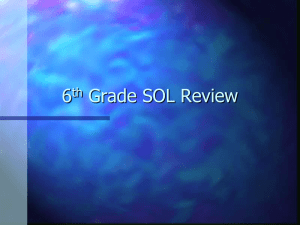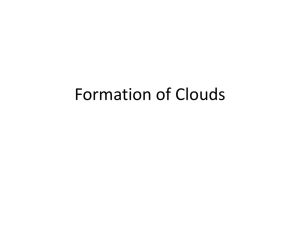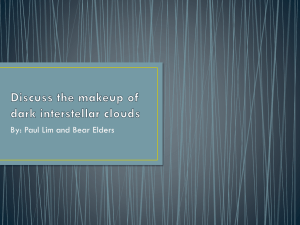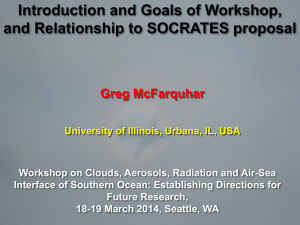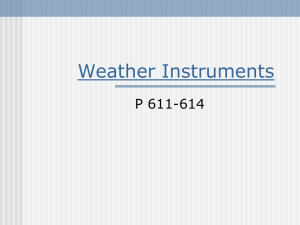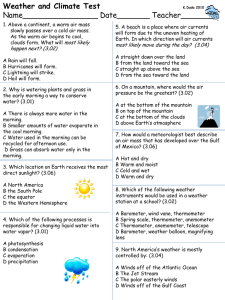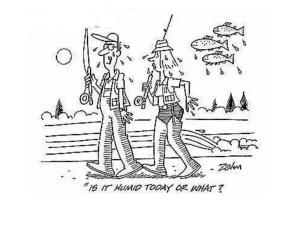Weather Review
advertisement
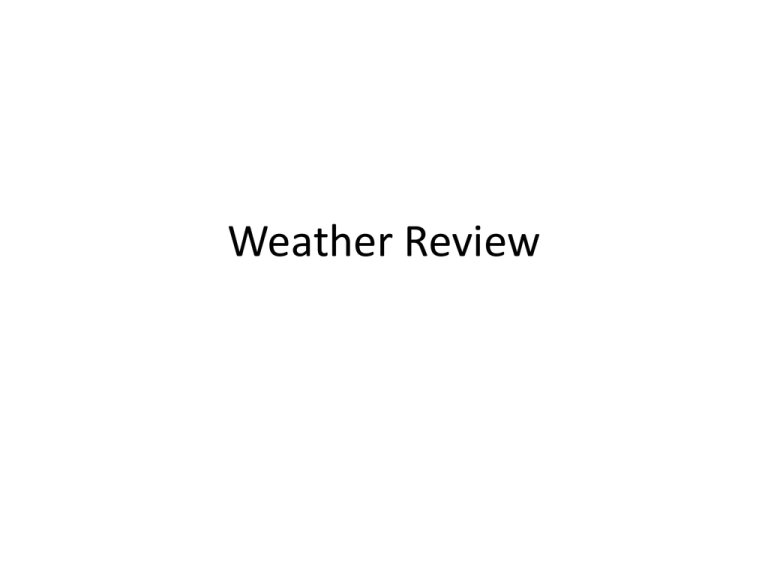
Weather Review Wind is due to a. pressure differences in the atmosphere b. the greenhouse effect c. Earth’s rotation d. storms that push air in front of them. On what day of the year does the North Pole tilt most directly toward the Sun? a. The spring equinox b. The fall equinox c. The winter solstice d. The summer solstice The ocean current called the Gulf Stream a. carries heat from Hawaii to the Western coast of North America. b. carries heat from the Gulf of Mexico to the North American coast and Northern Europe. c. vertically mixes the Atlantic ocean near the Southern United States. d. travels through all of the world’s oceans. Earth’s surface receives more solar radiation near the equator than at the poles. This uneven heating of Earth’s surface produces a. day and night. b. dry air at the equator. c. clouds. d. winds. Air pressure is due to the a. weight of water vapor in the air. b. collisions of air molecules. c. force of the wind. d. speed of the wind. Suppose that you saw clouds that were high in the sky and that looked like wispy strands of tattered cloth. An hour later, it started to rain. The clouds you noticed were a. cumulonimbus clouds. b. alto stratus clouds. c. cumulus clouds. d. cirrus clouds. Suppose that the air has reached its dew point. The relative humidity is a. 0 % b. 20% c. 65% d. 100% The gases that make up 99% of Earth’s atmosphere are a. nitrogen and carbon dioxide. b.oxygen and carbon dioxide. c. oxygen and nitrogen. d.oxygen and hydrogen. How are weather and climate related? a. Climate is the weather at a particular place and time. b. Climate is the average weather over a period of many years. c. Climate and weather are both produced by plate tectonics. d. Weather is climate that can be measured. The elements of weather include a. latitude and humidity. b. temperature and precipitation. c. the seasons and clouds. d. humidity and global warming. Why don’t the global winds moving from the North Pole to the South Pole follow a straight path? a. Objects moving in straight paths above Earth’s surface appear to be turning to observers on the ground. b. The Coriolis Effect comes into play. c. Earth rotates under the wind. d. All of the above. Which of the following is NOT produced by water in the atmosphere? a. Clouds b. Ocean currents c. Humidity d. Precipitation The Dew Point in Houston on March 3 at 6:00 a.m. is 38°F. This means that when the air temperature there reaches 38° F, at that time a. the air will be very humid. b. dew will evaporate. c. water vapor in the atmosphere will condense. d. dew will freeze. What is the scientific name for the dark, tall, puffy clouds that indicate a thunderstorm is coming? a. Cirrus clouds b. Cumulonimbus clouds c. Stratus clouds d. Cumulus clouds The angle at which the Sun’s rays strike the Earth has a great effect on a. Earth’s seasons. b. the way climate varies with latitude. c. the intensity of solar energy received at Earth’s surface. d. All of the above. The seasons are primarily due to a. the distance of Earth from the Sun. b. the wavelength of solar radiation. c. the tilt of Earth’s axis. d. variations in greenhouse gas levels. Daylight and nighttime hours are equal a. during the summer and winter solstices. b. during the equinoxes. c. in mid-January and mid-June. d. they are never equal. Almost all energy on Earth comes directly or indirectly from a. Earth’s interior. b. Radioactivity. c. The Sun d. Carbon dioxide in the atmosphere. If the concentration of carbon dioxide in the atmosphere increases, Earth’s average global temperature will a. increase. b. decrease. c. stay the same. d. fluctuate wildly. The troposphere is the atmospheric layer where a. ozone absorbs incoming ultraviolet radiation from space. b. the Aurora Borealis occurs. c. weather occurs. d. temperature increases with altitude. Cyclones are areas of low pressure. They are associated with a. calm weather. b. rough weather. c. stationary fronts. d. cirrus clouds. The Coriolis Effect turns a. wind. b.ocean surface currents. c. wind and ocean surface currents. d.Merry-Go-Rounds. A sea breeze is a local wind that blows at night from a region a. over the ocean toward land. b. of low pressure to high pressure. c. of high elevation to low elevation. d. None of the above. The change of water vapor to a liquid is called a. Evaporation. b. Condensation. c. Saturation. d. Dew point. A parcel of air will rise as long as it is a. denser than surrounding air. b. less dense than surrounding air. c. cooler than surrounding air. d. more humid than surrounding air. Vocabulary • • • • • • • • • • • Air mass Atmospheric pressure Climate Convection cell Cyclone Dew point Equinox Front Greenhouse effect Humidity Ionosphere • • • • • • • • • • • Mesosphere Relative humidity Solar radiation Solstice Stratosphere Terrestrial radiation Thermosphere Troposphere Weather Wind Wind chill
